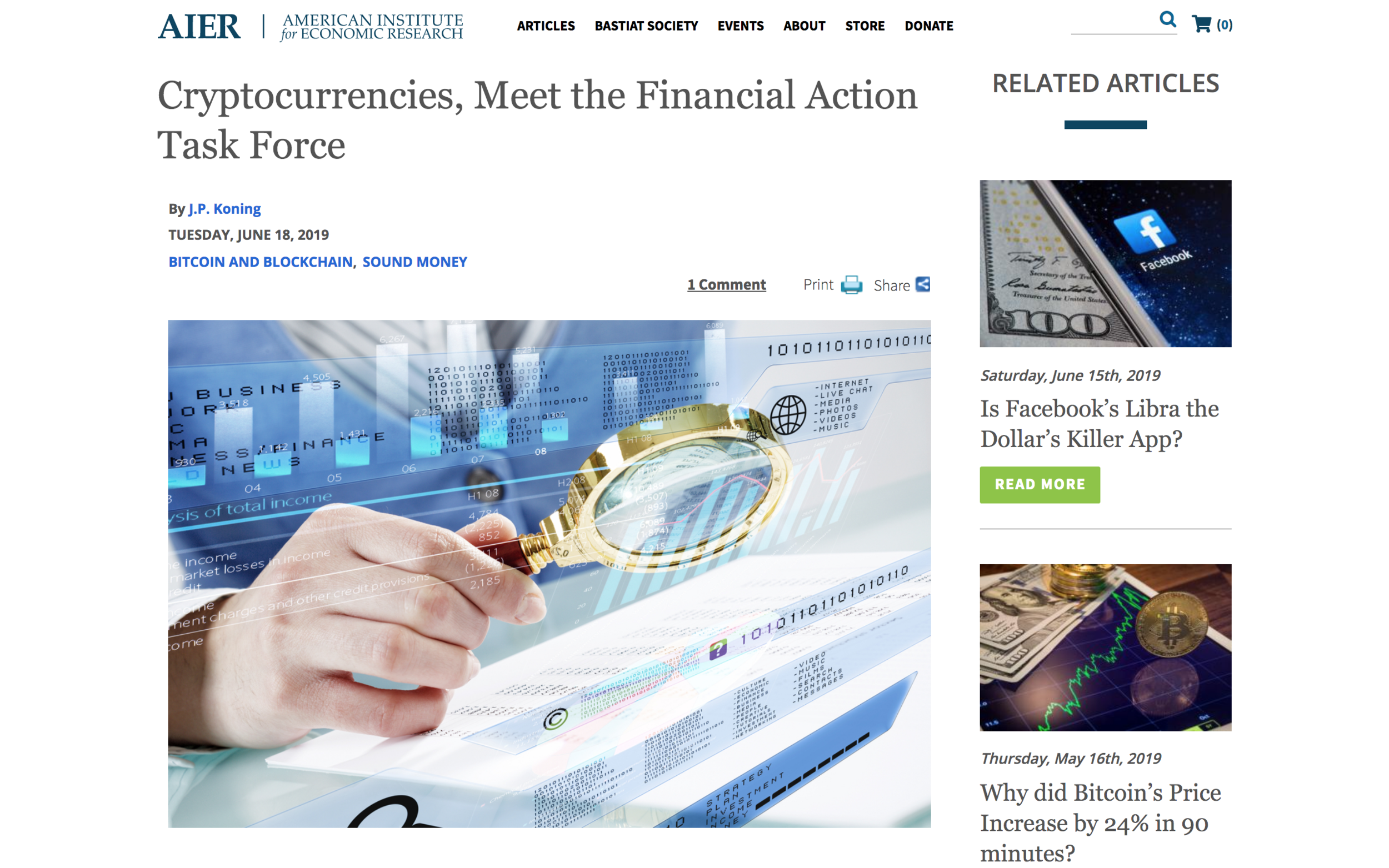JP Koning on Ill-Considered Government Policies Standing in the Way of the Emergence of the Digital Cash that Can Eliminate Any Lower Bound on Interest Rates
I have always been impressed with JP Koning, both for his blog Moneyness and for the insights he has on Twitter. Now he is also posting fascinating pieces on the website of the American Institute for Economic Research. I show two above, with links at the bottom of screenshots. These two share the theme of government agencies—without sufficient thought—standing in the way of the development of the digital cash that could reduce the footprint of physical cash and thereby make it easier to neutralize any tendency of paper currency to create a lower bound on interest rates. (See “Ruchir Agarwal and Miles Kimball—Enabling Deep Negative Rates to Fight Recessions: A Guide.”)
Let me back up the claim that they are doing this without sufficient thought. First, the Financial Action Task Force, in its desire to make an easy trail of cryptocurreny transactions for law enforcement is ignoring the benefit of drawing people away from physical cash transactions that leave much less of a trail. It would be a different matter if we were eliminating physical cash (or allowing only heavy coins) for the sake of crime control, as Ken Rogoff recommends in The Curse of Cash. But as long as we leave physical cash unconstrained, we should try to make digital cash a more attractive option, since when necessary, it can be tracked more easily than physical cash.
Second, the Fed is worried that access by narrow banks to reserve accounts will lead to a lower bound on rates that will be contractionary. The solution is simple: the Fed can and should lower the interest rate on reserves very quickly in such situations. There should always be a quantitative trigger in place that instantly lowers the interest on reserves if reserves suddenly and unexpectedly go up. Or a good substitute is to have a quantitative ceiling on reserves, but provide a repo facility for funds beyond that, with the rate on the repo facility allowed to go down instantly if there is a surge of funds into it. (See “How to Keep a Zero Interest Rate on Reserves from Creating a Zero Lower Bound.”)
During times when the Fed is trying to keep the economy from overheating, allowing narrow banks to put money into an interest-bearing reserve account helps to keep interest rates up. One thing the Fed might worry about is that keeping deposit rates up would reduce bank profits. Lower bank profits could lead to lower bank capital in a proximate sense. But there are many other ways for banks to keep their net worth’s high to enhance financial stability, such as not paying dividends until they are stable. If these other financial stability measures lead to lending rates being higher, the Fed can just cut rates overall. (See “Why Financial Stability Concerns Are Not a Reason to Shy Away from a Robust Negative Interest Rate Policy.”)
And if ending the ‘tax’ on depositors and ‘subsidy’ to banks and borrowers implicit in banks being able to get away with low deposit rates is a serious policy concern (which I don’t believe for a minute), legislation should increase the existing explicit tax on depositors and explicit tax breaks for banks and borrowers rather than using oligopolistic low rates for bank depositors as a sneaky way of doing this. Remember, allowing narrow banks the same privileges as regular banks is a way to increase competition in a safe way. It is rare for increased competition to be a bad thing, especially after the Fed has used interest rate policy to get the economy to the natural level of output given that level of competition.

